Intertidal zone organisms
1/46
There's no tags or description
Looks like no tags are added yet.
Name | Mastery | Learn | Test | Matching | Spaced |
|---|
No study sessions yet.
47 Terms
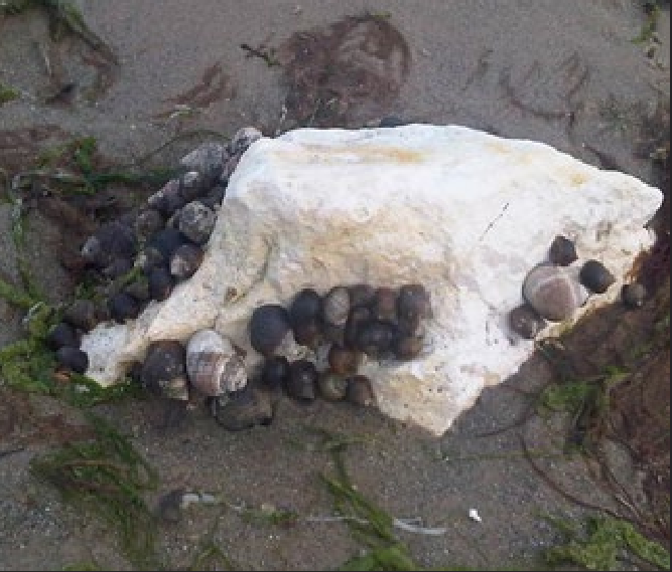
What is the name of this species? In which intertidal zone does it live? Describe its habitat.
Sea snail: (Littorina sp.): lives in the Supralittoral zone. .): it Lives in the crevices of rocks, in areas with higher moisture concentration, but can also occupy more exposed surfaces.
What are the three intertidal zones?
The three intertidal zones are Supralittoral, Mediolittoral and Infralittoral.
Describe the Supralittoral zone
The Supralittoral zone is also called the upper intertidal zone: It is rarely submerged (only during spring tides) but receives water splashes from the waves.
Describe the Mediolittoral zone
The middling intertidal zone: The zone affected by tides twice a day. Here, we can find tide pools (scientifically called intertidal enclaves), and it is the zone with the greatest species diversity.
Describe the Infralittoral zone
The lower intertidal zone: The zone extending from the mediolitoral down to the maximum depth where light-loving algae (those that require a lot of light) are found. Only the upper part of this zone is exposed for short periods of time, during very low tides.
Name three species that belong to the Supralittoral zone
the sea snail, the black lichen, and the limpet
Name five species in the Mediolittoral zone
The goose barnacle, the sea star, the mussel, the urchin and the anemone
Name five species that live in the Infralittoral zone
The rock blenny, the pool shrimp, the shore crab and the spider crab, bladder wrack
During high tide, some areas of the intertidal zone become..
Submerged
During low tide, some areas of the intertidal zone become..
Emerged
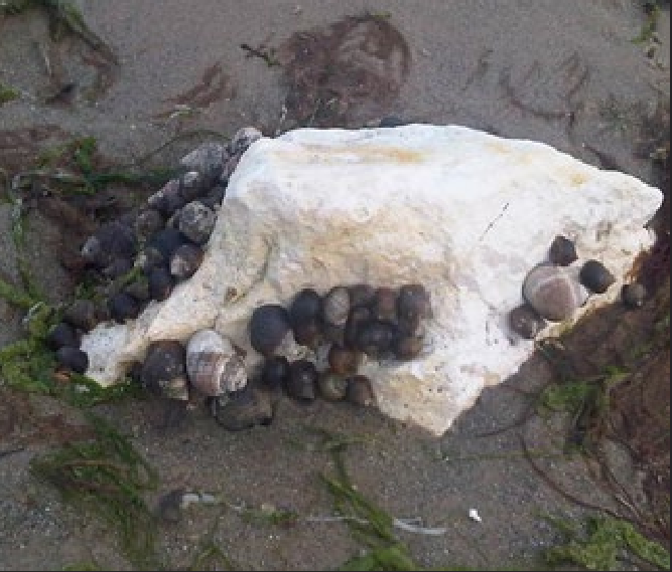
What is the Portugese name of this species?
Caracol do mar

What is the name of this species? In which intertidal zone does it live? Describe its habitat.
Limpet (Patella sp.): Lives in the Supralittoral zone When not submerged, they attach themselves firmly to the rocks to avoid drying out. They are also found in the Mediolitoral zone.
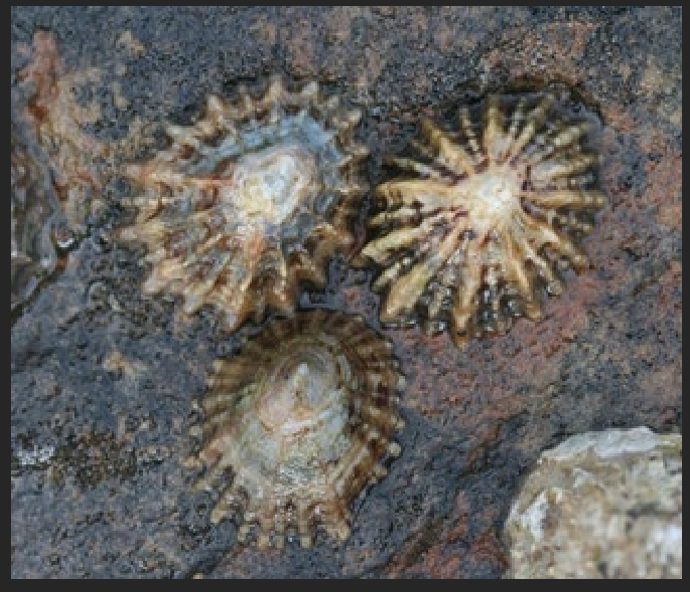
What is the Portugese name of this species?
Lapa
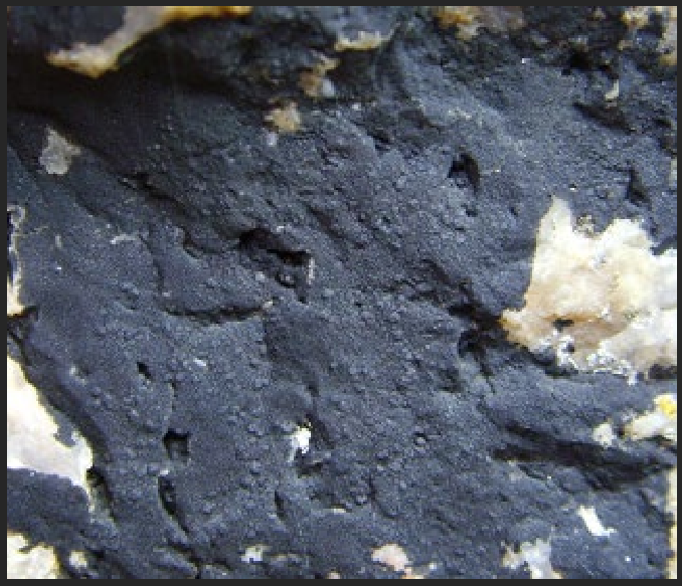
What is the name of this species? In which intertidal zone does it live? Describe its habitat.
Black lichen (Verrucaria maura) = zwarte korstmos: lives in the Supralittoral zone. A lichen resembling tar. It is found in areas with less wave influence, but still receives some water droplets.
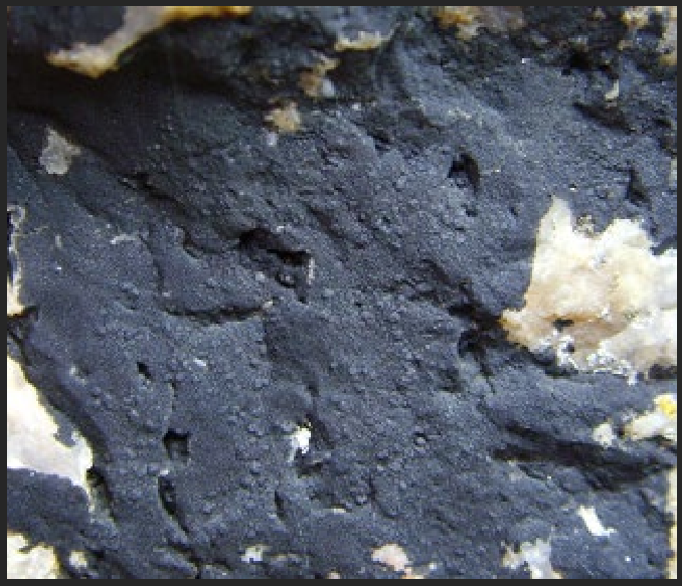
What is the Portugese name of this species?
Líquene negro

What is the name of this species? In which intertidal zone does it live? Describe its habitat.
Goose barnacle (Chthamalus sp.): lives in the Mediolittoral zone. Fixed to the rocky substrate, usually in clusters, covering surfaces of rocks not directly exposed to wave action.
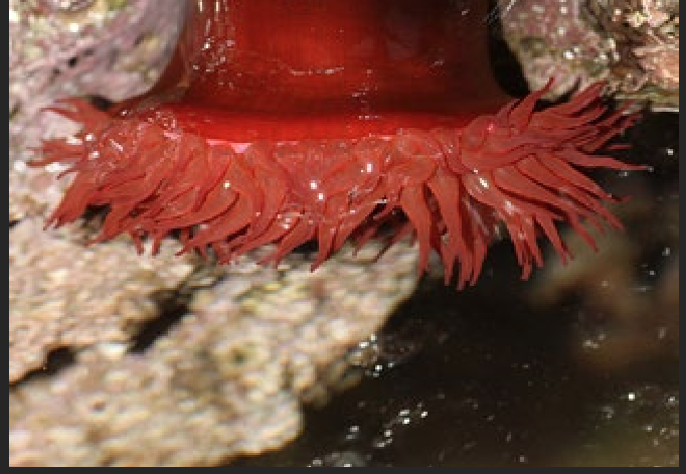
What is the name of this species? In which intertidal zone does it live? Describe its habitat.
Anemone (Actinia sp.): Lives in the Mediolittoral zone. Small anemone, red or green, with short tentacles. It occupies intertidal enclaves and, to resist desiccation during low tide, it retracts its tentacles and closes up, taking on a spherical shape (hence also called "sea strawberry" or "sea tomato"). Its tentacles are stinging and act as a defense against predators, but they also allow it to capture food in the water column.
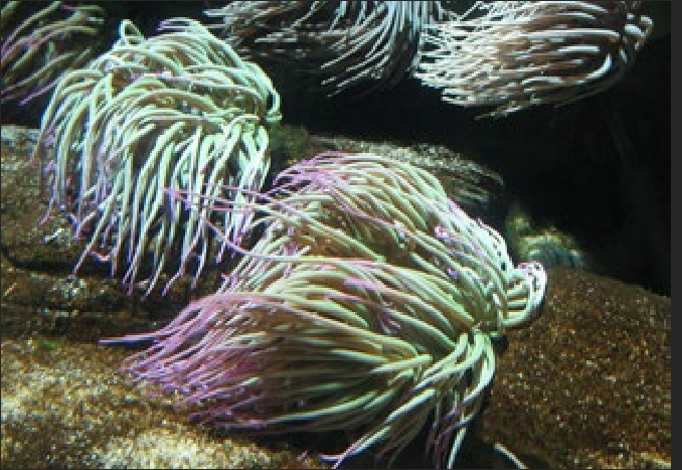
What is the name of this species? In which intertidal zone does it live? Describe its habitat.
Sea anemone (Anemonia sp.): Lives in the Mediolittoral zone. Larger than Actinia sp. (it can reach up to 10 cm in height). It has numerous, non-retractable tentacles.
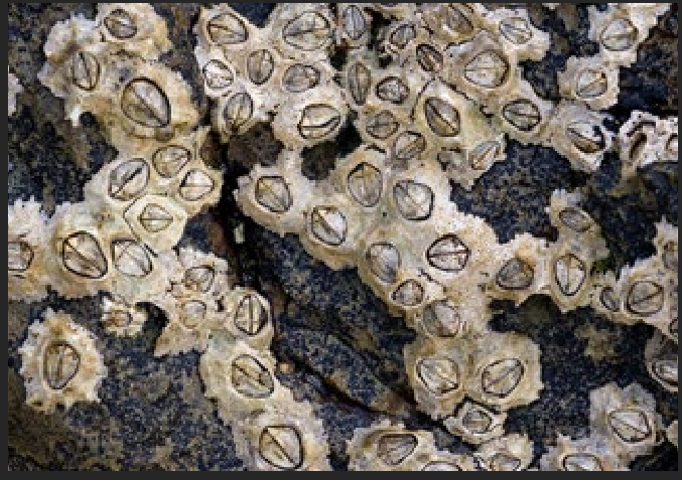
What is the Portugese name of this species?
Cracas
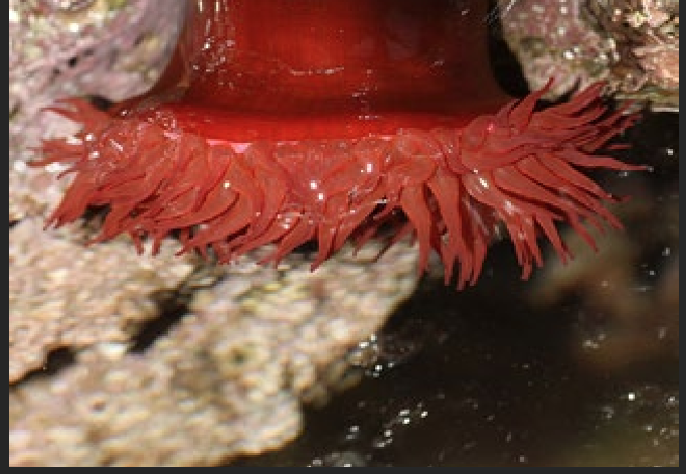
What is the Portugese name of this species?
Anémona
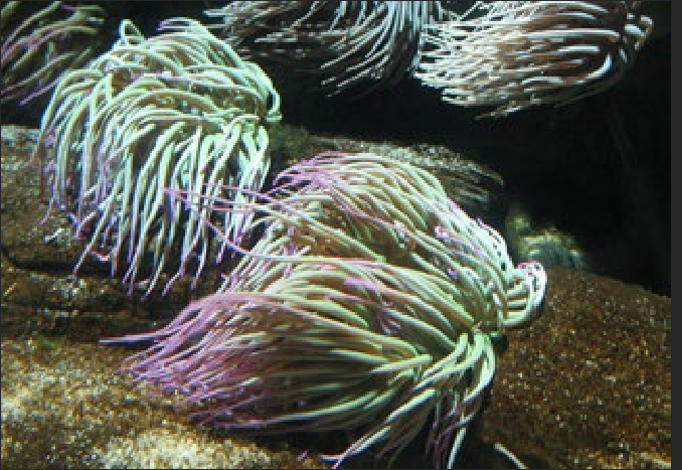
What is the Portugese name of this species?
Anémona do mar
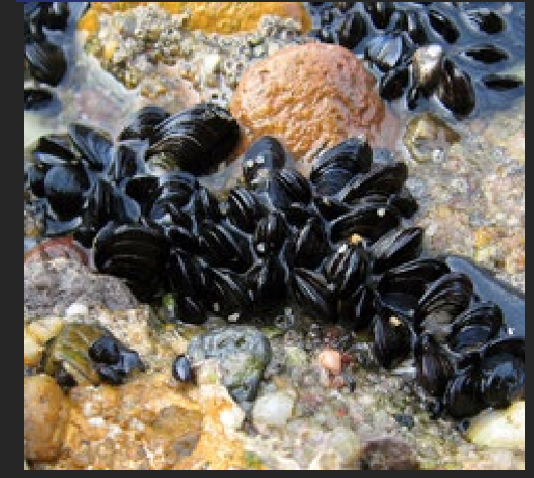
What is the name of this species? In which intertidal zone does it live? Describe its habitat.
Mussel (Mytilus edulis): lives in the Mediolittoral zone. Bivalves (mollusks with two shells) that attach to rocks by small threads. They are filter feeders, meaning they filter tiny particles from the water. They are usually found on coastlines exposed to strong wave action (with strong hydrodynamics), but their threads allow them to stay firmly attached to the rocks.
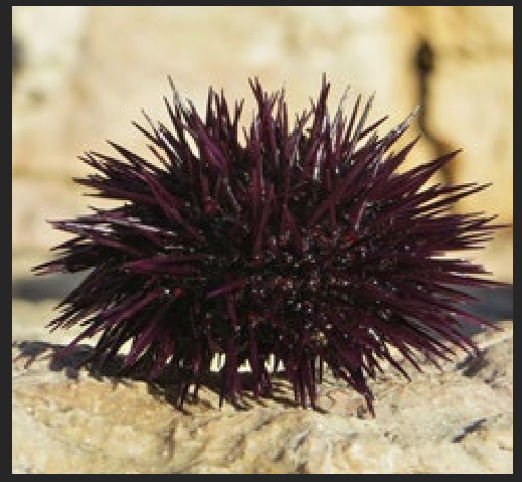
What is the name of this species? In which intertidal zone does it live? Describe its habitat.
Sea urchin (Paracentrotus lividus): lives in the Mediolittoral zone. They feed on algae and small invertebrates that they scrape from the rocks. Sea urchins are commonly seen in rocky areas with algae (especially Lithophyllum incrustans, a calcifying algae). Their spines are a defense mechanism against predators.
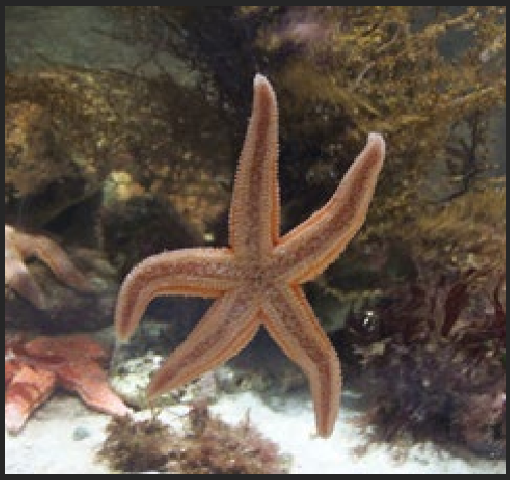
What is the name of this species? In which intertidal zone does it live? Describe its habitat.
Starfish (Asteria sp.): Lives in the Mediolittoral zone. Starfish have a star shape and small spines arranged irregularly on their dorsal surface. They occupy intertidal enclaves and feed on mussels and other shelled mollusks. They have what are called ambulacral feet, which allow them to move and detect prey, transporting it to their mouth. Interestingly, when a starfish loses one of its arms, it can regenerate it
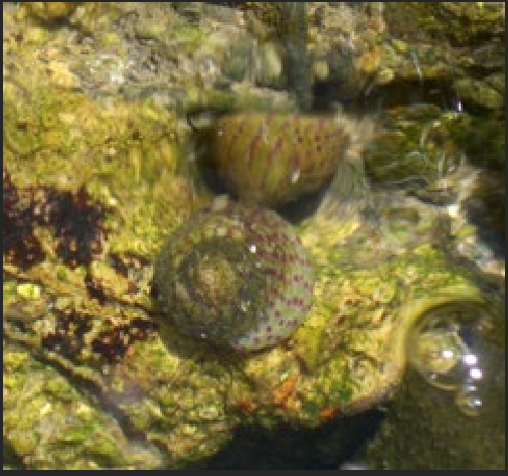
What is the name of this species? In which intertidal zone does it live? Describe its habitat.
Top shell (Gibbula sp.): lives in the Mediolittoral zone. A gastropod with a single shell (mollusk, like the mussel, but univalve). It has a rounded shell with wide red stripes.
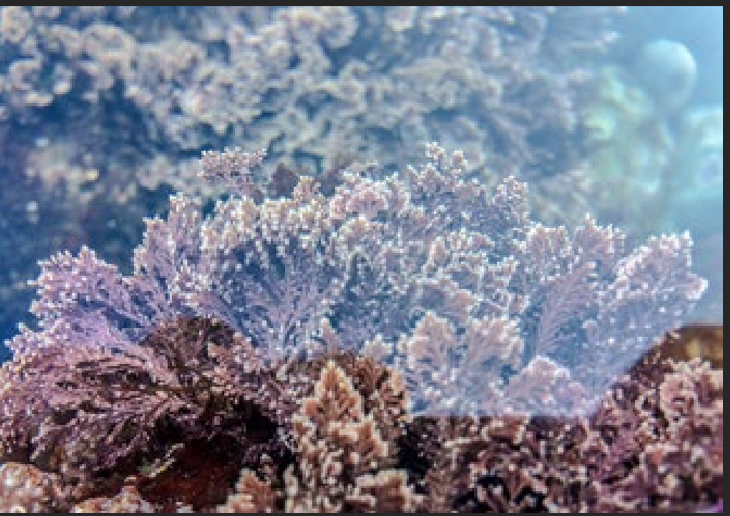
What is the name of this species? In which intertidal zone does it live? Describe its habitat.
Coral algae (Corallina elongata): lives in the Mediolittoral zone. Pink in color, its thallus walls are filled with limestone. The structure of the thalli and their overlapping help retain water during low tide.
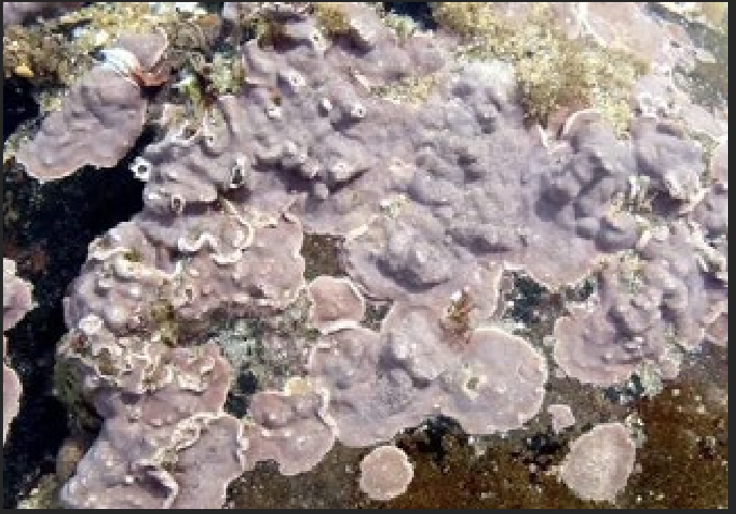
What is the name of this species? In which intertidal zone does it live? Describe its habitat.
Limestone algae (Lithophyllum incrustans): lives in the Mediolittoral zone. A crustose limestone algae, pink or violet in color, often associated with sea urchins.
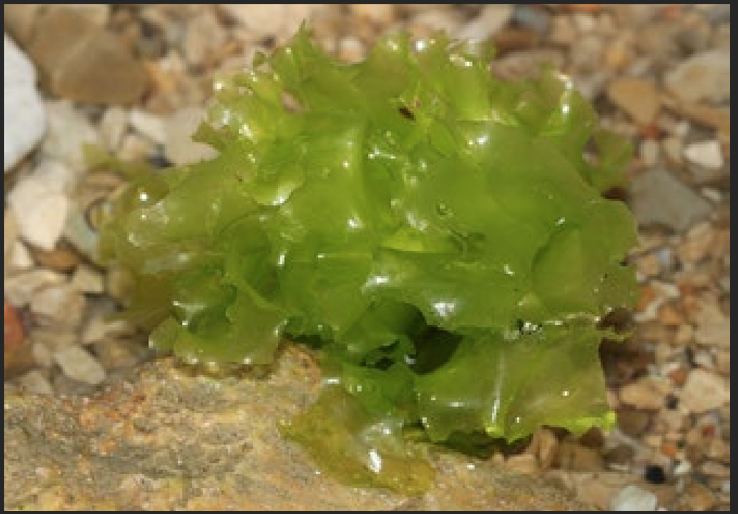
What is the name of this species? In which intertidal zone does it live? Describe its habitat.
Sea lettuce (Ulva lactuca): Lives in the Mediolittoral zone. Green, translucent algae that resembles lettuce.
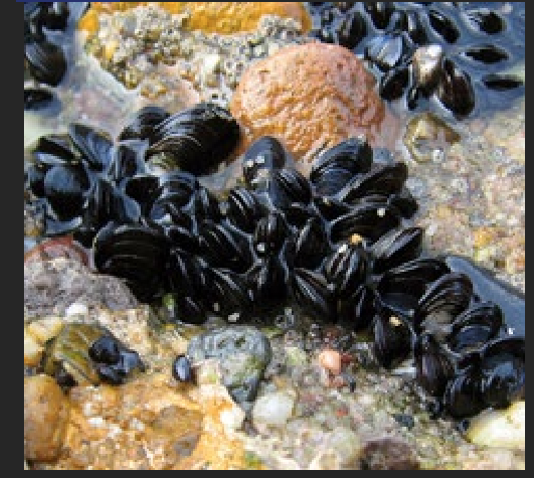
What is the Portugese name of this species?
Mexilhão
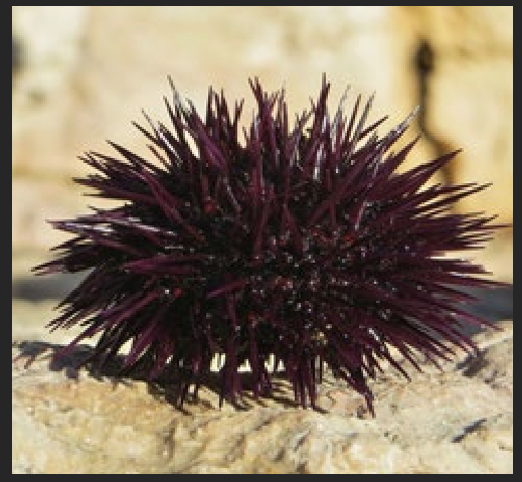
What is the Portugese name of this species?
Ouriço-do-mar
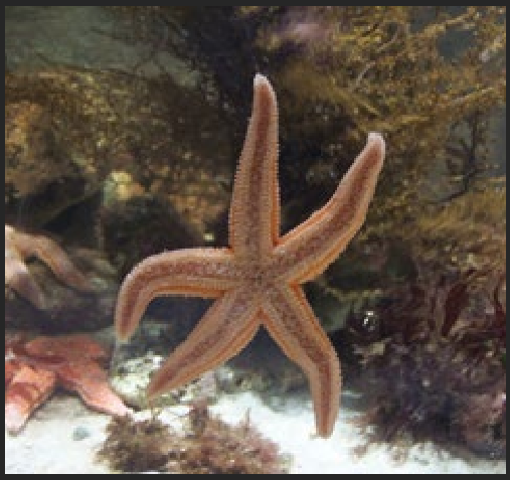
What is the Portugese name of this species?
Estrela-do-mar
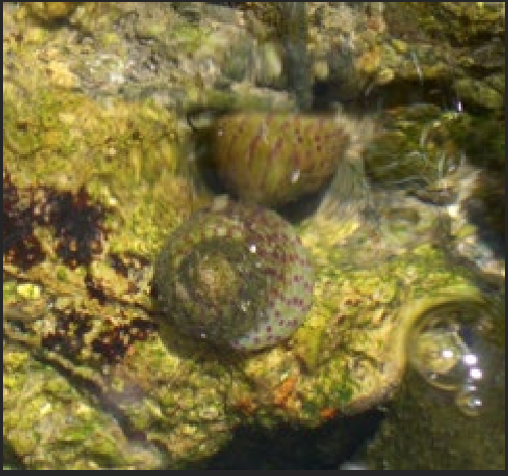
What is the Portugese name of this species?
Burrié
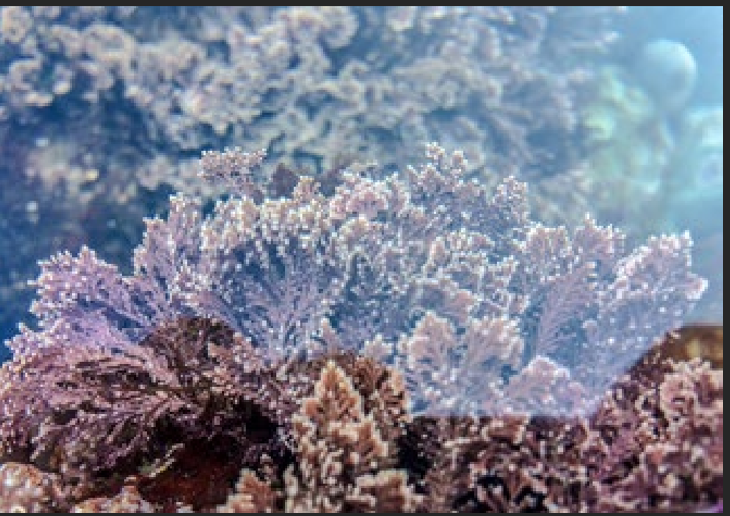
What is the Portugese name of this species?
Alga coral
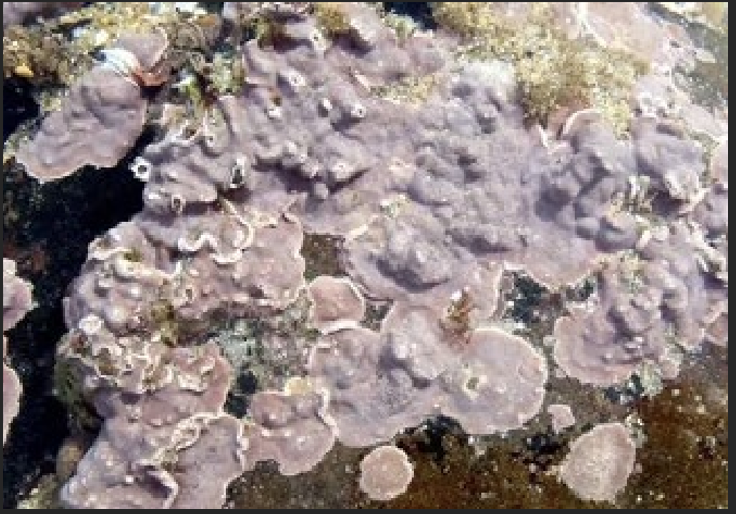
What is the Portugese name of this species?
Alga calcária
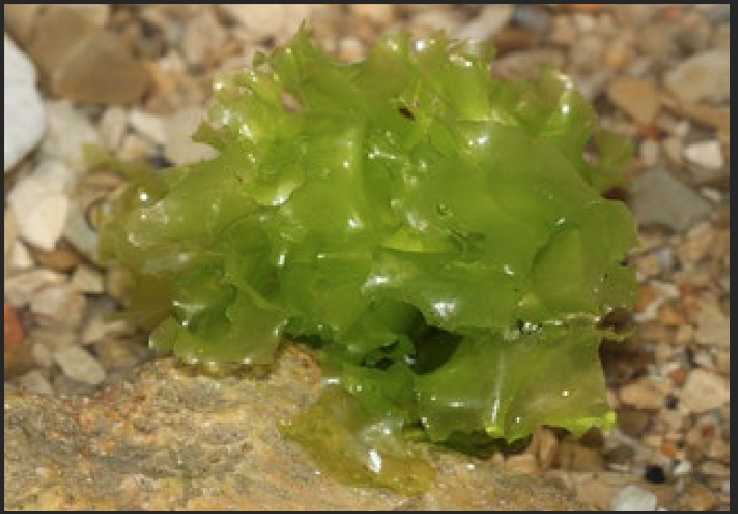
What is the Portugese name of this species?
Alface-do-Mar
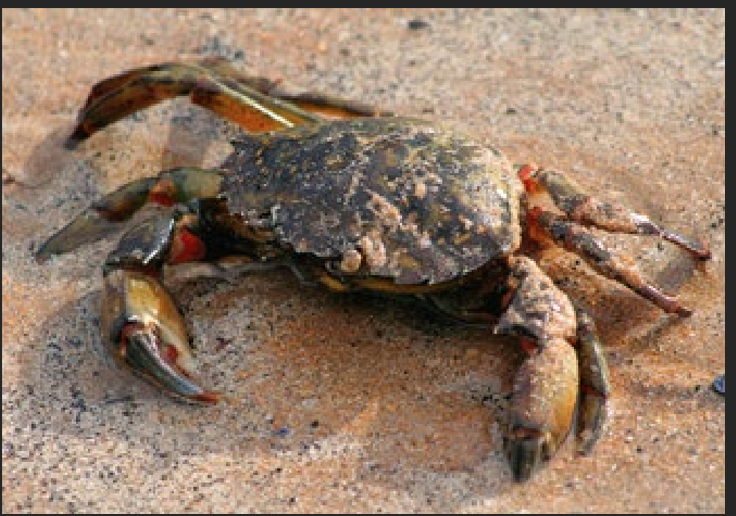
What is the name of this species? In which intertidal zone does it live? Describe its habitat.
Crab (Carcinus maenas): Lives in Infralittoral zone. A crustacean whose color can range from greenish to reddish (related to its developmental stage or habitat).
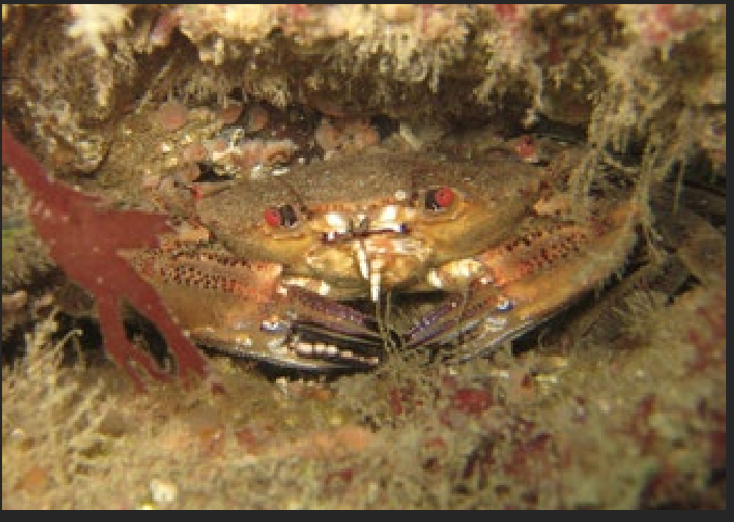
What is the name of this species? In which intertidal zone does it live? Describe its habitat.
Shore crab (Necora puber): Lives in Infralittoral zone. A crustacean, dark brown in color, with its shell covered in small hairs.
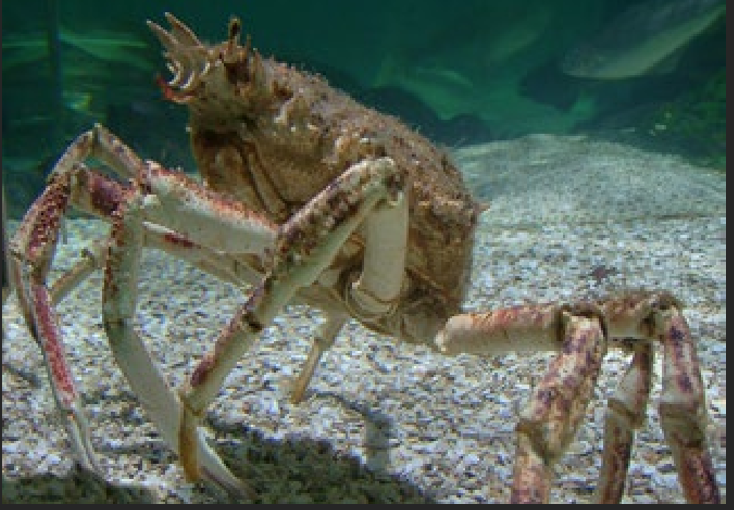
What is the name of this species? In which intertidal zone does it live? Describe its habitat.
Spider crab (Maja brachydaetyla): Lives in Infralittoral zone. A crustacean with its shell covered in small spines, known for camouflaging itself with algae, sponges, and small rocks or shells, which it constantly places over its shell.
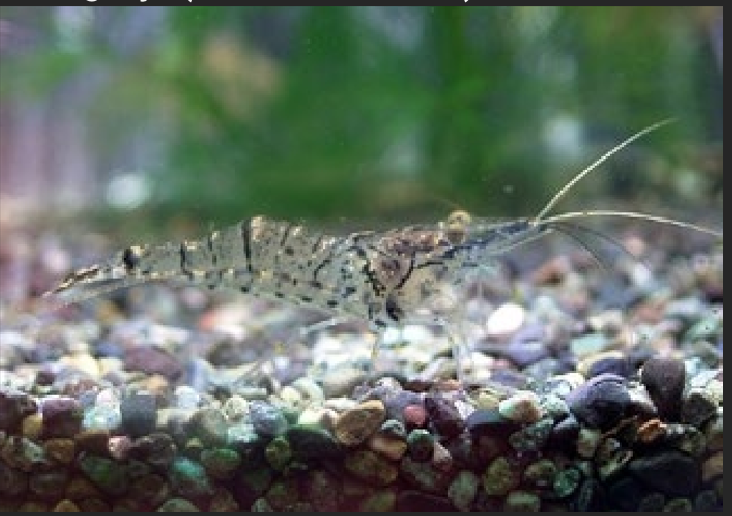
What is the name of this species? In which intertidal zone does it live? Describe its habitat.
Pool shrimp (Palaemon sp.): Lives in Infralittoral zone. A crustacean, grayish to pale pink in color, with darker stripes along its body.
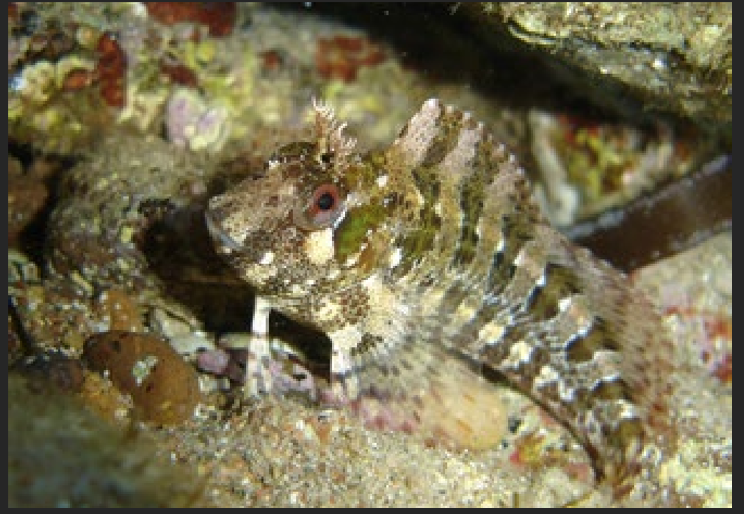
What is the name of this species? In which intertidal zone does it live? Describe its habitat.
Rock blenny (Parablennius gattorugine): Lives in Infralittoral zone. A fish from the blenny family (commonly known as blennies), often found in tide pools. Like most fish inhabiting tide pools, it has no scales but a bare body, which may be covered in mucus.
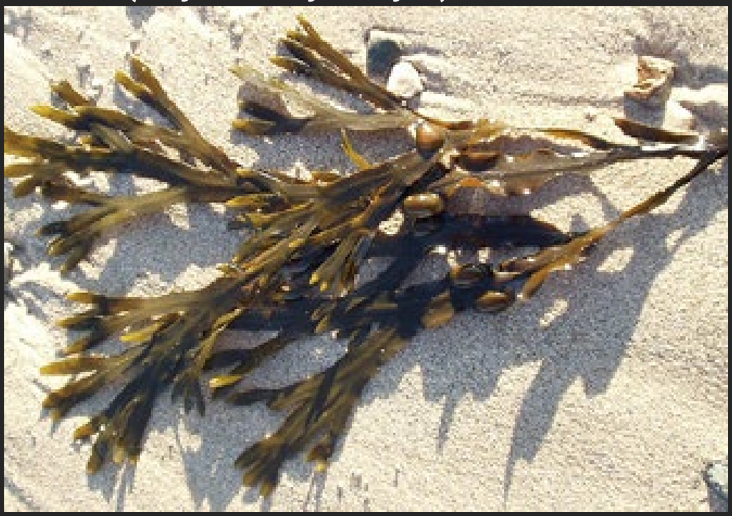
What is the name of this species? In which intertidal zone does it live? Describe its habitat.
Bladder wrack (Fucus vesiculosus): lives in Infralittoral zone. A type of brown algae with strong, flat, branching stems, featuring small air-filled bladders that allow it to float.
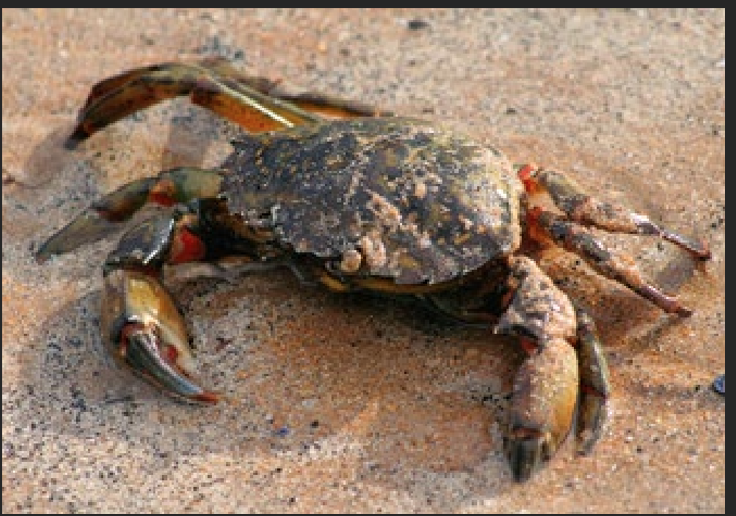
What is the Portugese name of this species?
Caranguejo

What is the Portugese name of this species?
Navalheira
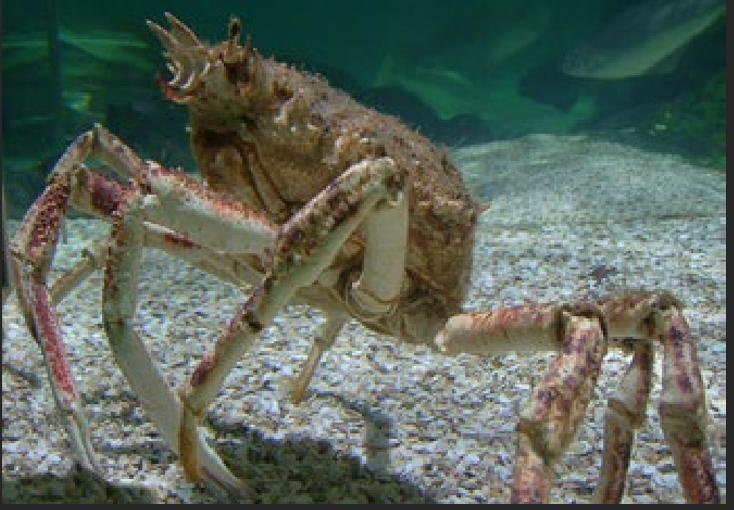
What is the Portugese name of this species?
Santola
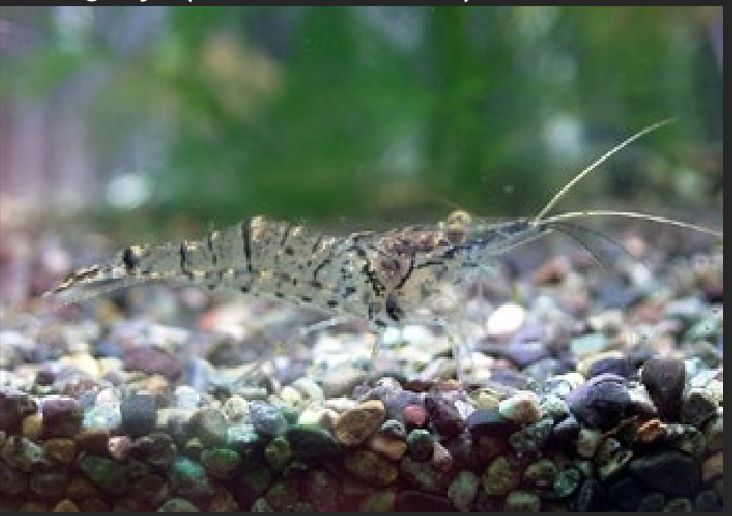
What is the Portugese name of this species?
Camarão das poças
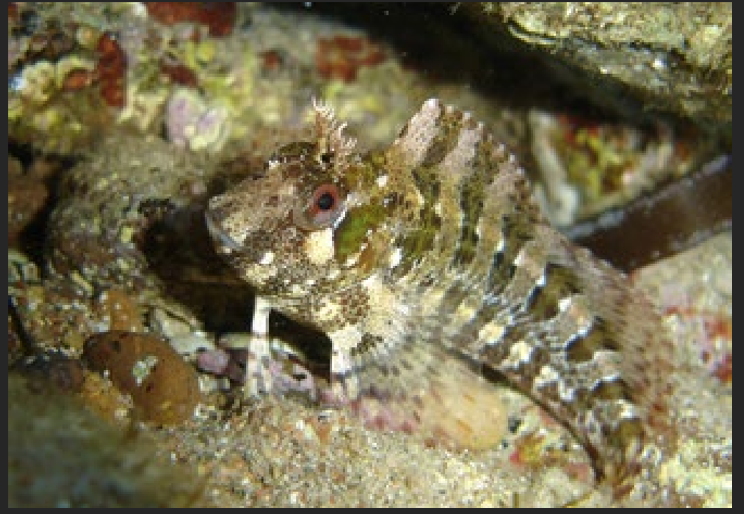
What is the Portugese name of this species?
Caboz
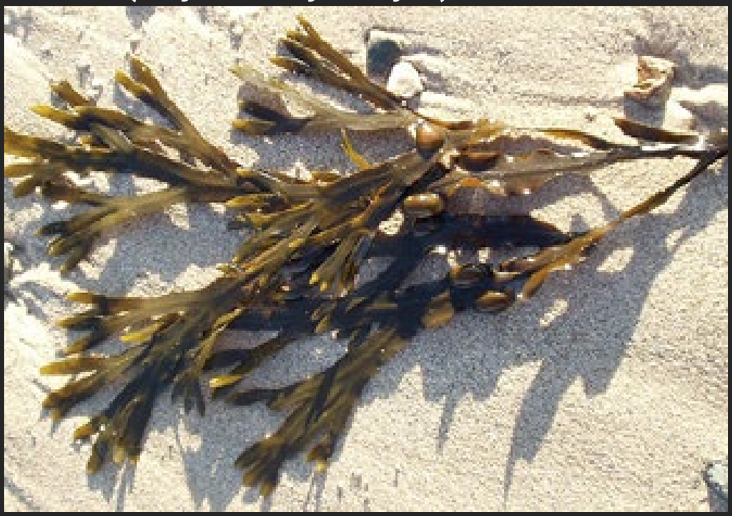
What is the Portugese name of this species?
Bodelha